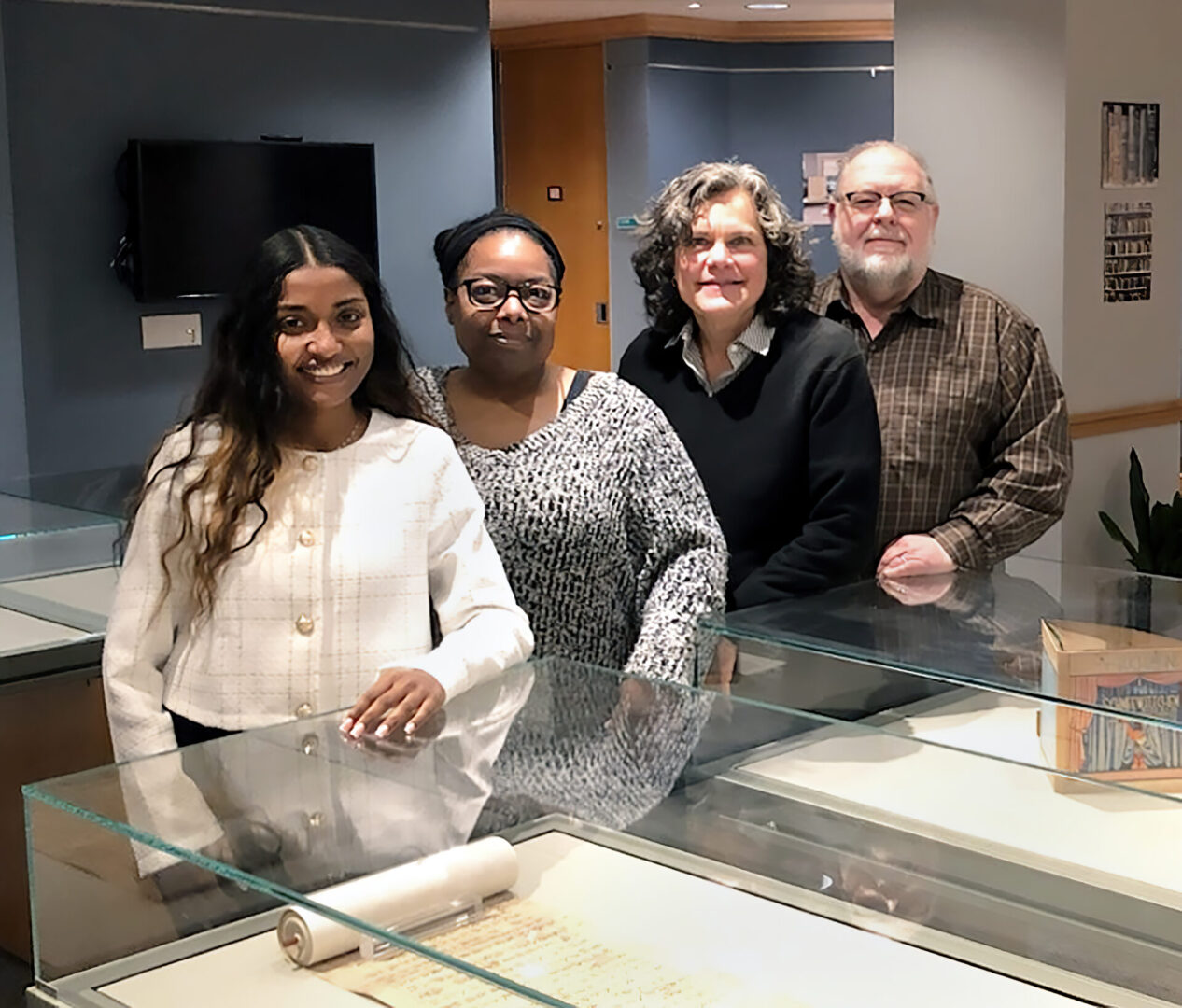BELLEFONTE — Local historical societies and the public are invited to assist a new effort to preserve local history. The Black History in Centre County Project is collecting information about Black residents, businesses and events from 1800 to 1950 that will be shared online with the community, free of charge.
Project co-director Racine Amos moved to Centre County in mid-2019 to join Penn State’s University Libraries as an archivist and librarian. She became curious about the contributions that African Americans made in the region and discovered that the available historical information was limited.
“You can’t tell me that African Americans had nothing to do with the construction of Penn State,” she said. “Where is their labor in the narrative of this county?”
Amos told Ben Goldman, the university archivist, about her desire to focus on this research area after she learned of the death of the Rev. Dr. Donna King, pastor of Bellefonte’s St. Paul AME Church, in January 2021. King was a highly respected local expert in Black history and AME Church history.
Goldman introduced Amos to Julia Spicher Kasdorf, a documentary poet and Penn State liberal arts professor of English who shared Amos’s interest in preserving local Black history.
Together, as co-directors, Amos and Kasdorf launched the volunteer-based Black History in Centre County Project, a collaboration between members of Penn State University and the community.
“We know that people have private collections,” said Amos, who now serves as Penn State’s community engagement archivist and librarian. “We want to be able to give them an opportunity to share the information that they have, or the images or the artifacts. We know that there’s other information out there.”
Kasdorf’s husband, Philip Ruth, joined the project as the research team coordinator, bringing his 35 years of research experience in public history. He is currently director of research for Cultural Heritage Research Services Inc. in Lansdale.
Kasdorf said: “We selected some people whose names came up early in our census research to see what kind of information could be learned about their lives. Working with public records and a number of local newspapers, Phil has traced networks of connection in the community and discovered many details. These findings help us to appreciate the kinds of challenges some Black Centre Countians faced, and the kinds of successes they achieved even early in the 19th century.
“Four of the individuals we looked at will be featured at length on the blog post, with descriptions of how Phil gathered the information,” Kasdorf said.
An example of a life rediscovered through research is that of Adeline Harris Lawson Graham (1856-1930). Born in Bellefonte, she worked as a domestic servant for Quaker households in Bellefonte and Chester County, including ex-Gov. Andrew Gregg Curtin’s household. After marrying a barber from Emporium, she became involved in Emporium’s social life, developing a reputation as an excellent cook. Her remains are buried in Bellefonte’s Union Cemetery.
The project team is planning two performances for the public in April.
Kasdorf said, “The performances will focus on Adeline Lawson, but feature several other individuals, including her parents and husband.”
Carmin Wong, a graduate student and research assistant on the project, is writing the historical narratives for the production she will create with Penn State emeritus professor Anthony Leach, who will direct the 19th-century choral music.
The performances will take place Saturday, April 22, at 7 p.m., at Faith United Church of Christ, 300 E. College Ave. in State College, and on Sunday, April 23, at 2 p.m., at Trinity United Methodist Church. 128 W. Howard St, Bellefonte.
Additional members of the Black History in Centre County Project team include Bethann Rea, digital collections management librarian, and Nathan Piekielek, a geospatial services librarian and associate professor of geography, who can help create local Black history tours.
During 2022, student interns Jada Yolich and Jenna Lugo assisted with census records research and a blog post, respectively.
A goal of the project is to create a free, publicly accessible online archive with images of Black Centre County residents.
Amos said she and co-branch manager Judy Dombrowski have gone through two-thirds of the photos held at the Centre County Library & Historical Museum. Although photographers were available and affordable for many, Amos and Dombrowski have not found many photos of local African Americans.
She, Ruth and Kasdorf think one reason for the lack of Black images and records may be the Fugitive Slave Act of 1850. The act ensured that slave owners and their agents could seek escaped slaves in free states like Pennsylvania, required people to assist with capturing runaways and denied runaways the right to a jury trial. Anyone who interfered with the process of recapturing faced a fine of $1,000 and six months in jail.
“Although all Fugitive Slave Acts were repealed on June 28, 1864, it makes it hard to do this research because of the fact that people couldn’t keep records because it would implicate them,” Amos said.
She hopes the public will share their photo collections from 1800 to 1950 so they can be scanned for the online archive and returned to the owners.
The Black History in Centre County Project has benefited from and built upon the prior research and work by the Rev. Dr. Donna King, Jaqueline Melander, Sue Hannegan, Patricia House, Robbin Degeratu, Elizabeth Lose, Sue Kellerman, Mack Mahan, Charles Blockson and Daniel Clemson. Local genealogist Constance Cole is a consultant on the project and is the author of “The Black, Mulatto, and Allied Families of Centre County.”
“The ultimate goal is for this to be a model and proof of concept that academic research libraries and institutions can do this community level work to preserve history and to acknowledge untold history, and that it can be replicated,” Amos said.
The project team will post events on the WPSU community calendar and the Black History in Centre County Project website, blkctrco.psu.edu. The website includes the project research blog and a contact form to request more information.




